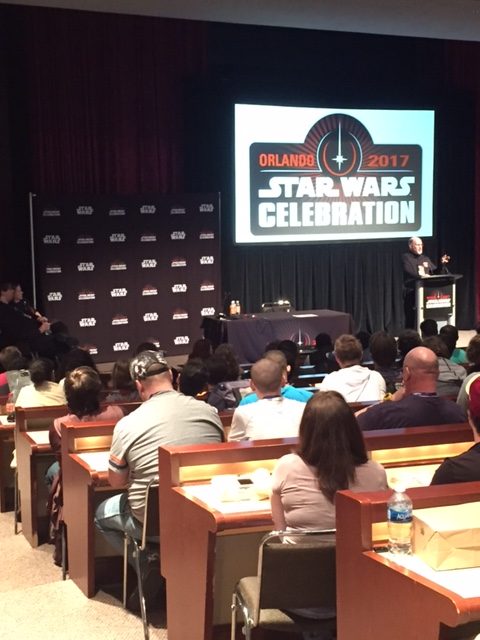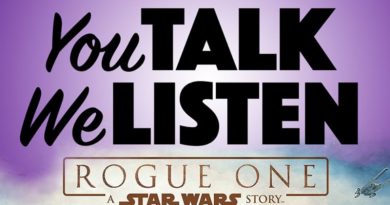Seven Things To Learn From Timothy Zahn’s Panel at Celebration Orlando
At Star Wars Celebration Orlando, Timothy Zahn presented “101 Ideas in an Hour” at the Star Wars University stage to a standing room only crowd. It was a fun, interactive panel with Tim creating a plot based on audience participation. It was an enjoyable panel just to attend, and it was an even better panel to learn from the maestro himself. While I didn’t capture all one hundred and one ideas, here are the top seven writing tips I did learn.
1. The same plot by different writers can tell very different stories. Don’t be afraid to use an idea that someone else has used—your take on it will be different because each writer is unique.
2. Every choice you make in telling your story is a branch point to where the story is going to go, so explore where the story will go with different choices. Be willing to let things simmer and come back to it.
3. In fantasy fiction, magic is a stand-in for power. In real life, all forms of power have a cost; political power, money, and fame all need to be made and monitored. Similarly, magic has to have a downside, which you as the author create. It’s also important to know how long magic has been in the world you create? Is it a new technology? Is it old and well established so it is well understood?  This creates different balances of power and countermeasures to the power of magic. Whether you tell the reader the rules or not, you as the author should remain consistent for the story to be satisfying.
This creates different balances of power and countermeasures to the power of magic. Whether you tell the reader the rules or not, you as the author should remain consistent for the story to be satisfying.
4. An interesting plot generator is to take a current trend or profession and project where it’s going to go: for example, artificial limbs. Where can we go with them, other than restoring injuries? What if people used them for committing crimes? How would we catch those criminals? What if the limb is hacked and and an otherwise innocent party is forced to commit a crime?
Consequences and consequence testing helps move the plot forward and keeps the story consistent. Follow the idea to its logical conclusion.
5. Heroes, villains, and antagonists: A classic plot is a hero vs. a villain, who is an obvious bad guy. Antagonists oppose the hero, but they may not be bad; they may just be a cop doing their job. Not all antagonists are villains, and having all three in a story could be interesting.
6. You can create a character who drives a plot, or create a situation first and the characters afterwards to populate the situation. Either way, you always want the character’s arc to develop with the story arc.
In the Thrawn trilogy, for example, the situation in Heir To The Empire was that Palpatine is dead. What would the galaxy be like five years later? What would Leia be doing? Han? Luke? Who would be leading the Empire? Zahn wanted a leader who led differently from the Emperor or Vader, who led by loyalty. Thrawn’s character grew from that situation.
7. Plot twists: in the ideal plot twist, the reader figures it out one paragraph before the character. Set them up to be fair to your reader.
- The (Re)Ascendancy of Thrawn - February 19, 2022
- Get your Chiss On: A Review of Thrawn Ascendancy Chaos Rising - September 17, 2020
- Review: Shadow Fall (a Star Wars Alphabet Squadron Book) - June 26, 2020











